Camlet fabric, steeped in a rich tapestry of history and elegance, is a woven textile that has enthralled the world for centuries.
Originally made from the fine hair of camels or goats, this luxurious material evolved to incorporate opulent fibers like silk and wool, bestowing upon it a glossy sheen and delicate softness.
Adored by nobility in the past, the camlet’s allure continues to shine through its applications in sophisticated clothing and accessories.
From its ancient origins to its contemporary adaptations, camlet’s journey through time is a testament to the enduring allure of delicate fabrics and their indelible mark on the fashion world.
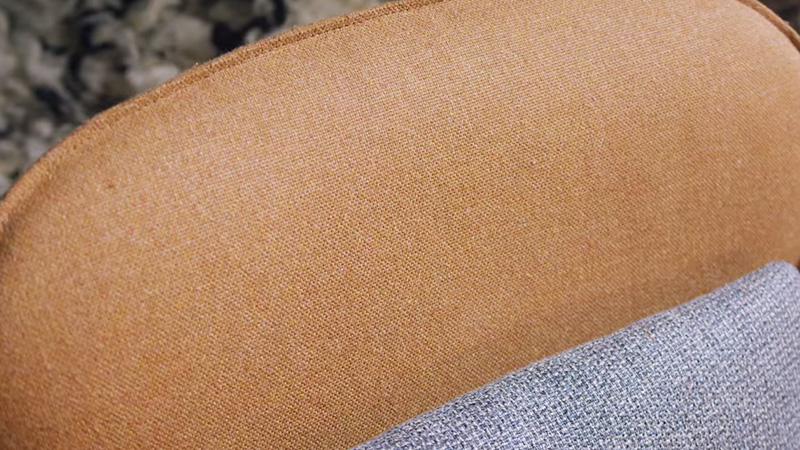
History of Camlet Fabric
Camlet fabric has a rich history originating from Arabic chamal, signifying “fine.” French scholar Gilles Ménage traced its roots to “zambelot,” a Levantine term for textiles.
The fine hair of a Turkish goat, likely the Angora goat, leads to the term “Turkish Camelot.” Highly prized in the Middle Ages, the camel was renowned for its lightweight, glossy, and luxurious feel.
It became popular in Europe during the Renaissance when it was traded along ancient Silk Road routes. Over time, its composition evolved, incorporating various fibers like silk and wool.
Despite fluctuations in popularity, the camlet remains a fascinating piece of textile history, blending cultures and traditions.
What is Camlet Fabric?
Camlet fabric is a woven textile traditionally made from camel or goat hair, later often blended with silk or wool. It boasts a glossy, luxurious sheen, ideal for elegant clothing and accessories.
Soft and lightweight, camlet drapes gracefully and has historical significance, favored by nobility in the past. While it offers a sense of opulence, its delicate nature requires careful handling.
Modern variations may use synthetic fibers to mimic its appearance. Camlet remains a versatile and sought-after fabric, valued for its unique qualities and contribution to fashion heritage.
Characteristics of Camlet Fabric
Camlet, or Camelot or camblet, is a fabric historically referred to as a woven textile made from camel hair or a blend of wool and silk.
Over time, the term has evolved, and camlet now can refer to various types of fabrics, including those made from synthetic fibers, characterized by their appearance and texture rather than their specific content.
Here are some of the critical characteristics of traditional and modern camlet fabrics:
Lightweight and Thin
Camlet fabric is characterized by its lightweight and thin nature. It is woven to be relatively fine, making it suitable for various garments and accessories.
Glossy and Shiny
One of the distinctive features of the camlet is its glossy appearance. The fabric’s surface reflects light, giving it an elegant and luxurious sheen.
Soft and Smooth
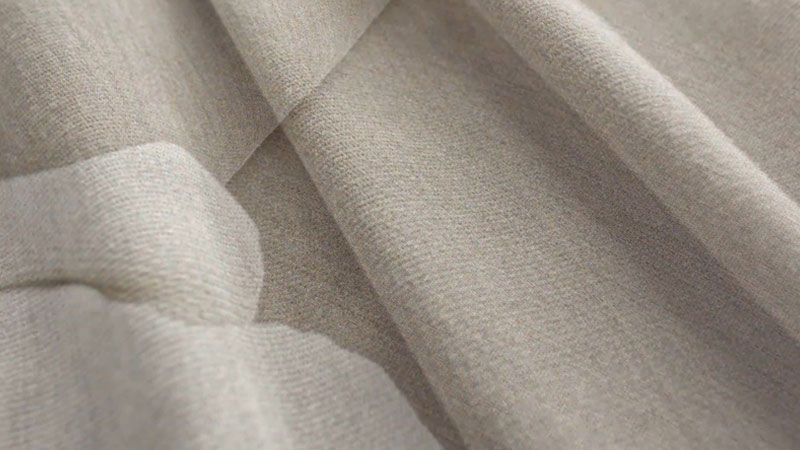
Camlet fabric has a soft and smooth texture, making it comfortable to wear against the skin. This characteristic is often enhanced using high-quality fibers like silk and fine wool.
Blend of Natural Fibers
Traditional camlets were made from natural fibers, including wool, silk, and sometimes camel or goat hair. The combination of these fibers contributed to its unique properties.
Versatile and Durable
Despite its delicate appearance, camlet fabric is quite versatile and durable. It can create various garments, including dresses, cloaks, outerwear, and accessories like scarves and shawls.
Excellent Drape
Due to its lightweight and soft nature, camlet fabric has excellent drape, meaning it hangs gracefully and flows beautifully for clothing.
Historically Prized
The camlet has been highly prized for its quality and opulent appearance. It was favored by European royalty and nobility during the Middle Ages and the Renaissance.
Varied Colors
Camlet fabric was available in a wide range of colors, often vibrant, further contributing to its appeal in fashion.
Influence on Fashion
Camlet fabric has significantly impacted historical fashion trends, using various styles and designs throughout different periods.
Modern Adaptations
While traditional camlet production has diminished, modern adaptations may use synthetic fibers or blends to recreate its look and feel, preserving its legacy in contemporary fashion.
Types of Camlet Fabric

Historically, camlet fabric has been made from various materials, including camel hair, silk, and wool. Over time, the composition and production methods have evolved, leading to variations in the types of camlet fabric available.
Here are some common types:
Wool Camlet
The traditional and historical camel was primarily made from wool, wonderful wool sourced from sheep. It provided the fabric with its softness, warmth, and lightweight qualities.
Silk Camlet
Some camlet fabrics incorporate silk fibers, enhancing the fabric’s sheen and luxurious feel. Silk camlets often combine the smoothness of silk with the warmth of wool.
Cotton Camlet
Camlet fabrics can also be made from cotton fibers, creating a more affordable and breathable option. Cotton camlets are often used for summer clothing and accessories.
Synthetic Camlet
In modern times, camlet fabrics may be made from synthetic fibers such as polyester or nylon. These materials mimic the glossy appearance of traditional camlet and offer various color options.
Blended Camlet
Camlet fabrics can be made from a blend of different fibers, combining the qualities of each material. Common blends include wool and silk, wool and polyester, or silk and cotton.
Faux Camlet
This type of camlet is not made from traditional materials but is designed to mimic the appearance of a genuine camlet. Faux camlets are often used in affordable fashion items.
Embroidered Camlet
Some camlet fabrics feature intricate embroidery, adding decorative patterns and designs to the fabric’s surface, enhancing its appeal.
Printed Camlet
Camlets can also be printed with patterns and designs, offering various options for creating unique and visually appealing garments.
Water-resistant Camlet
Specialized camlet fabrics may be treated to have water-resistant properties, making them suitable for outdoor wear and protection from the elements.
Patterned Camlet
Camlet fabrics can feature a variety of patterns, from simple stripes to elaborate jacquard designs, providing versatility for different fashion applications.
What is Camlet Fabric Made of?

Traditional Origin
Camlet fabric historically originated from camels or goats’ hair. In its early origins, camlets were made by blending these natural fibers to create a soft, lightweight fabric with a glossy sheen.
Transition to Silk Blend
Over time, the production of camlet evolved, and silk became a popular addition to the fabric. The combination of goat’s hair and silk resulted in a luxurious fabric with a more pronounced shine and a smoother texture.
Goat’s Hair and Wool Blend
Another variation of camlet fabric emerged with the blend of goat’s hair and wool. This combination added warmth and softness to the fabric, making it suitable for cooler climates and winter wear.
Wool and Cotton Blend
In some instances, camlet fabric was made by blending wool and cotton fibers. This combination offered a more breathable and affordable option while maintaining some of the fabric’s desirable characteristics.
Modern Adaptations
With the advancement of textile technology and the availability of synthetic fibers, modern camlet fabrics may incorporate various materials like polyester, nylon, or rayon.
These synthetic blends aim to mimic the appearance and properties of traditional camlet.
Special Treatments
In contemporary production, camlet fabrics may undergo specialized treatments to enhance specific characteristics. For example, water-resistant coatings or finishes may be applied to make the fabric suitable for outdoor use or protective clothing.
Dyeing and Printing
Once the fiber blend is established, camlet fabrics are dyed in various colors, often natural or synthetic dyes. Printed camlet fabrics may also feature intricate patterns and designs, adding to the fabric’s aesthetic appeal.
Weaving Process
The chosen fibers are spun into yarns and then woven into looms to create the camlet fabric. The weaving process can vary, resulting in different patterns and textures.
Finishing Touches
After weaving, the camlet fabric is subjected to finishing processes such as washing, steaming, and pressing. These steps ensure the fabric is soft, smooth, and ready for use in clothing or accessories.
Application in Fashion
The finished camlet fabric is then used to create a variety of garments and accessories, including dresses, jackets, cloaks, scarves, and shawls.
Its elegance and versatility have made camlet a sought-after material throughout history and into the present day.
What is Camlet Fabric Used for?
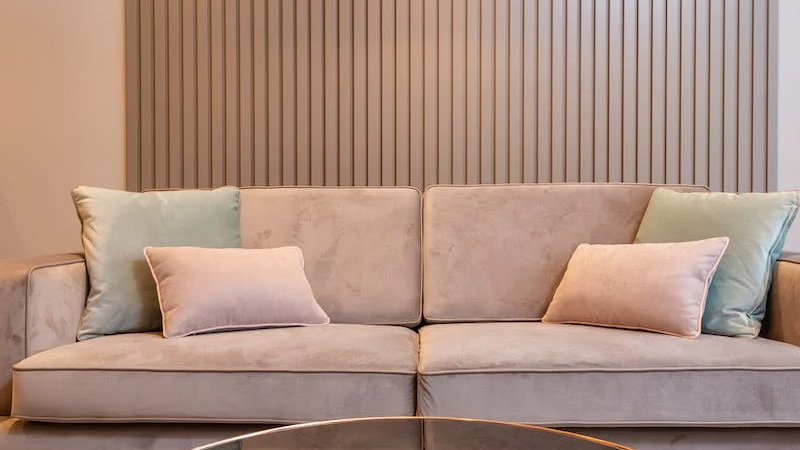
Camlet fabric has been historically used for various purposes due to its unique characteristics and luxurious appearance.
Some of its typical applications include
Clothing
Camlet fabric has been used to create various clothing items, including dresses, jackets, cloaks, coats, capes, and robes. Its lightweight and soft texture makes it comfortable, while the glossy sheen adds an elegant touch to garments.
Accessories
Camlet is also famous for making accessories such as scarves, shawls, handkerchiefs, and turbans. These accessories can add a touch of sophistication to an outfit and are often used for formal occasions.
Ecclesiastical Garments
Due to its refined appearance, the camlet was favored for ecclesiastical vestments and robes. It was commonly used for religious garments worn by clergy and dignitaries.
Upholstery
Camlet fabric has been used in upholstery, particularly for furniture coverings and drapery. Its glossy finish and softness can add a touch of elegance to interior decor.
Military and Official Uniforms
Historically, the camlet was utilized for military and official uniforms, especially by officers and nobility. The fabric’s sheen and smoothness conveyed authority and prestige.
Historical Costumes
Camlet remains popular for historical reenactments and period dramas, as it can accurately replicate the look and feel of clothing from specific historical eras.
Fashion Accessories
Camlet fabric is sometimes used in fashion accessories like hats, bags, and gloves, adding a touch of luxury to these items.
Outdoor Wear
Water-resistant or weather-treated camlet fabrics create functional outerwear, such as raincoats and jackets, for protection against the elements.
Theatrical Costumes
Camlet is often used in theatrical productions to create costumes for characters requiring a regal or elegant appearance.
Traditional Ceremonies
In some cultures, camel fabric is still used for traditional ceremonies and special occasions, symbolizing wealth and cultural heritage.
How Do You Wash Camlet Coat?

Washing a camlet coat requires special care to preserve its delicate fibers and maintain its luxurious appearance.
Camlet coats are often made from natural fibers like wool and silk, so following these steps is essential to ensure proper cleaning.
Check the Care Label
Before washing the camlet coat, check the care label for any specific instructions or recommendations from the manufacturer. Some camlet coats may be dry clean only, and attempting to wash them at home could damage the fabric.
Spot Cleaning
Consider spot cleaning first if there are small stains or spills on the coat. Use a damp cloth with mild soap or a specialized fabric cleaner for delicate fabrics.
Gently dab the stained area, avoiding excessive rubbing, which could damage the fibers.
Hand Wash (if Suitable)
You can proceed cautiously if the care label indicates that hand washing is acceptable. Fill a basin or sink with cold water and add a small amount of gentle detergent suitable for wool or silk.
Soak the Coat
Submerge the camlet coat in the soapy water and gently agitate the water to ensure even cleaning. Allow the coat to soak for a few minutes.
Gently Clean
Using your hands, gently massage the fabric to lift dirt and grime. Avoid excessive rubbing or twisting, as it could cause the fibers to tangle or lose shape.
Rinse Thoroughly
Empty the soapy water from the basin or sink and refill it with clean, cold water. Rinse the coat thoroughly until all the detergent is removed.
Press Out Excess Water
Carefully press out excess water from the coat. Do not wring or twist the fabric, as this can damage its delicate structure.
Absorb Moisture
Lay the coat flat on a clean, absorbent towel. Roll the towel with the coat inside to absorb excess moisture.
Dry Flat
Lay the camlet coat flat on a dry towel or clean surface, shaping it back to its original form. Avoid hanging the coat to dry, as this can stretch the fabric.
Allow to Air Dry
Let the coat air dry in a well-ventilated area away from direct sunlight or heat sources.
How to Care for Camlet Coat?
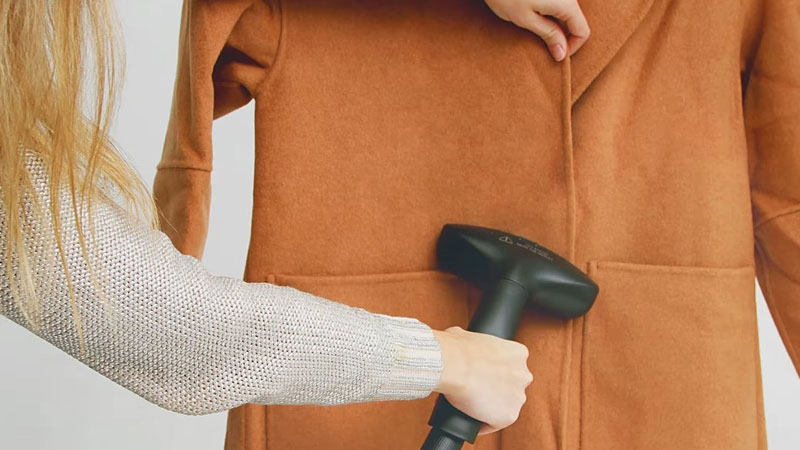
Caring for a camel coat is essential to preserve its beauty and prolong its life. Camlet coats are often made from delicate fibers like wool and silk, so here are some tips on caring for your camlet coat.
Follow Care Instructions
Always check the care label or any specific instructions provided by the manufacturer. Adhere to these guidelines to ensure you’re treating the coat appropriately.
Dry Clean Only (if Indicated)
If the care label specifies “dry clean only,” take the coat to a reputable, experienced dry cleaner. Professional dry-cleaning is the safest method for delicate fabrics like camlet.
Avoid Frequent Washing
Camlet coats do not require frequent washing. Washing too often can lead to wear and tear and may cause the fabric to lose its luster.
Spot Clean Stains
If you notice any stains or spills on the coat, address them promptly with spot cleaning. Use a damp cloth with mild soap or a specialized fabric cleaner suitable for delicate materials.
Handle With Care
When wearing the coat, be mindful of sharp objects or rough surfaces that may snag or damage the fabric. Avoid using excessive force when buttoning or zipping the coat to prevent pulling on the fibers.
Store Properly
Store the camlet coat in a cool, dry place away from direct sunlight when not in use. Avoid hanging the coat on a hook for an extended period, as this may cause the fabric to stretch.
Instead, store it on a wide, padded hanger or lay it flat.
Brush Gently
Use a soft-bristled brush or a lint roller to remove lint or surface dust. Gently brush the coat in the direction of the fabric’s weave.
Beware of Moths
Like other wool garments, camlet coats can be susceptible to moth damage. Store the coat with moth repellents, such as cedar blocks or lavender sachets, to deter moths.
Avoid Perfumes and Hair Sprays
When wearing the coat, please avoid direct contact with perfumes, hair sprays, or other chemicals, as they may stain or damage the fabric.
Professional Inspection
Periodically, have the coat inspected by a professional tailor or dry cleaner to check for any loose seams or damages that may require repair.
How to Sew Camlet Coat?
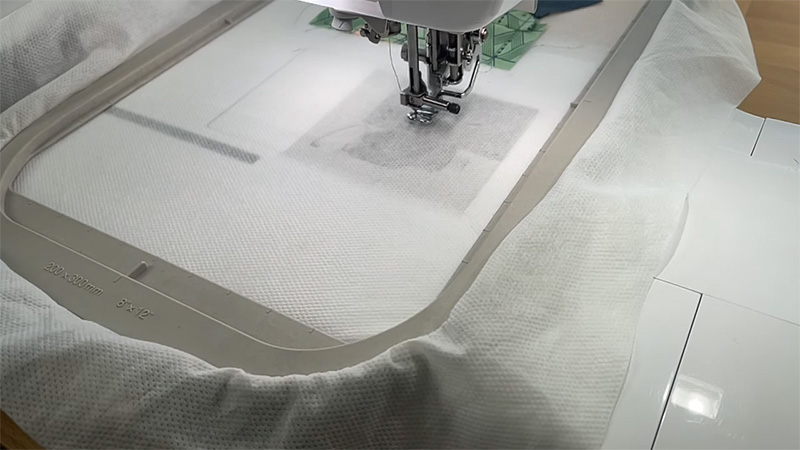
Sewing a camlet coat requires intermediate to advanced sewing skills, as camlet fabric can be delicate and require special handling.
Here is a general guide on how to sew a camlet coat
Materials Needed
- Camlet fabric.
- Coat pattern.
- Lining fabric (optional).
- Interfacing (optional).
- Sewing machine or needle and thread.
- Measuring tape.
Prepare the Pattern
Select a coat pattern that fits your desired style and size. Carefully cut out the pattern pieces from the camlet fabric, following the grain of the fabric for proper drape and structure.
If you want to add a lining, cut the lining fabric using the same pattern pieces.
Interface the Fabric (Optional)
If your camlet fabric is lightweight and needs extra stability, interface some sections of the fabric, such as the collar, lapels, or cuffs, with fusible interfacing.
This will add structure to these areas.
Pin and Sew
Pin the pattern together along the seam lines, with the right sides facing each other. Use fine pins to prevent leaving visible holes in the delicate fabric.
Sew the pieces together, following the seam allowances specified in the pattern. Use a straight or stitch suitable for the fabric’s thickness and weight.
Press Seams
After sewing each seam, press them open or to the side with a warm iron, using a pressing cloth to protect the fabric. Be careful not to apply too much heat or pressure to avoid damaging the camlet.
Add Lining (Optional)
If you’re using a lining, sew the lining pieces together following the same steps as for the outer coat. Leave an opening in the lining for turning the coat right side out later.
Attach the lining to the coat by pinning and sewing the neck and front edges together, right sides facing.
Finish Edges
Camlet can fray easily, so consider finishing the raw edges with a zigzag stitch or serger to prevent unraveling. If using a lining, turn the coat right side out through the opening in the lining, and then hand stitch the opening closed.
Hem
Hem the bottom of the coat, sleeves, and any other edges as specified in the pattern. Again, use a pressing cloth to protect the fabric while ironing.
Add Fastenings and Details
Follow the pattern instructions to sew buttons, snaps, or other fastenings as needed. You can also add details, such as pockets or decorative elements, to complete the coat.
Final Pressing
Give the entire coat a final press with a warm iron to ensure a polished and professional finish.
How Does Camlet Fabric Impact the Environment?
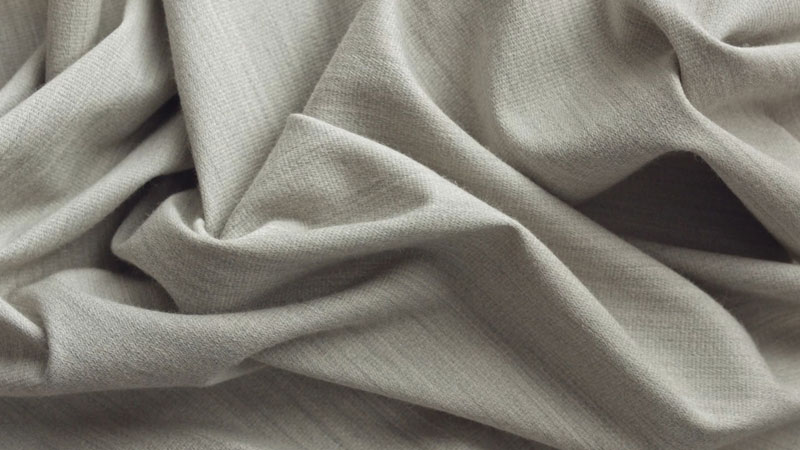
Like any textile, Camlet fabric can have positive and negative environmental impacts depending on various factors, including its production methods, fiber sources, and end-of-life treatment.
Here are some ways camlet fabric can impact the environment
Fiber Production
Sourcing natural fibers like wool and silk for camlet fabric can have environmental implications. Raising animals for wool and silk production requires land, water, and energy resources, possibly contributing to deforestation, water scarcity, and greenhouse gas emissions.
Chemical Use
Certain chemicals and dyes may be used during production to treat and color the fabric. The use of toxic substances can be harmful to the environment and may contribute to water pollution if not properly managed.
Water Consumption
The production of camlet fabric can be water-intensive, particularly in regions with water scarcity. Excessive water usage in textile manufacturing can deplete local water resources and affect surrounding ecosystems.
Energy Consumption
The energy required for processing, weaving, and finishing camlet fabric can have a significant carbon footprint. High energy consumption contributes to greenhouse gas emissions and climate change.
Waste Generation
Like other textiles, camlet fabric production generates waste at various supply chain stages. Waste fabric, trimmings, and offcuts can end up in landfills, adding to the growing textile waste problem.
Fast Fashion Impact
The fashion industry’s fast-paced production and consumption trends increase demand for textiles like camlet. The overconsumption of clothing leads to increased resource usage and waste generation.
Microfiber Shedding
Some synthetic fibers used in camlet fabric, such as polyester, can shed microfibers during washing. These microfibers may find their way into water bodies and threaten marine life and ecosystems.
Advantages and Disadvantages of Camlet Fabric
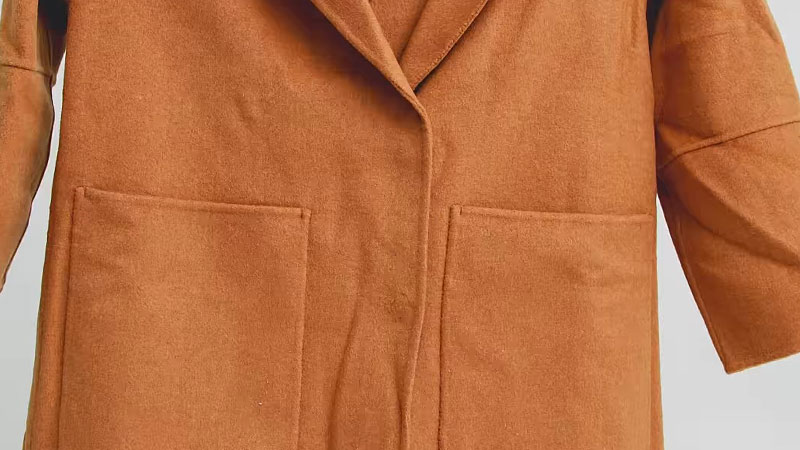
Camlet fabric is a type of woven textile used historically for various purposes. Like any material, it has its own set of advantages and disadvantages:
Advantages of Camlet Fabric
- Luxurious Appearance: Camlet fabric has a glossy and elegant sheen, giving garments made from it a luxurious and sophisticated look.
- Soft and Comfortable: Camlet fabric is known for its soft and smooth texture, making it comfortable to wear against the skin.
- Lightweight: Camlet is a lightweight fabric that creates flowing and graceful garments.
- Versatile: Camlet fabric can be used for various clothing items and accessories, making it a versatile choice for fashion designers.
- Historical Significance: Camlet has a rich history and has been favored by nobility and royalty, adding to its allure and prestige.
- Excellent Drape: Camlet fabric drapes beautifully, creating elegant silhouettes in clothing.
Disadvantages of Camlet Fabric
- Delicate Nature: Camlet fabric can be fragile and prone to fraying or damage if not handled carefully.
- Limited Availability: Traditional camlet fabric made from specific fibers like goat’s hair and silk may be challenging to find, as the production of such fabrics has decreased over time.
- Cost: High-quality camlet fabric can be expensive due to its luxurious nature and use of premium fibers.
- Environmental Impact: Depending on the sourcing and production methods, camlet fabric may have ecological implications, mainly if natural fibers are used.
- Limited Color Range: The availability of camlet fabric in a wide range of colors may be limited compared to other textiles.
- Not Suitable for Heavy Use: Due to its delicate nature, camlet fabric may not be the best choice for rugged or heavy-duty applications.
Comparison Table Between Camlet Fabric and Other Fabrics
| Property | Camlet Fabric | Similar Fabric 1 | Similar Fabric 2 |
|---|---|---|---|
| Luxurious Sheen | Yes | Yes | Yes |
| Soft Texture | Yes | Yes | Yes |
| Lightweight | Yes | Yes | Yes |
| Historical Significance | Yes | No | No |
| Delicate Nature | Yes | Yes | Yes |
| Environmental Impact | Variable | Depends | Depends |
| Versatility | Yes | Yes | Yes |
| Common Fiber Composition | Wool, Silk, Goat/ Camel Hair | Silk, Rayon, Viscose | Silk, Cotton, Wool |
| Availability | Limited | Widely available | Widely available |
| Cost | Expensive | Moderate | Moderate |
FAQs
Camlet fabric’s lightweight and breathable nature makes it suitable for various seasons. It is often preferred for spring and fall when a light layer of clothing is needed. However, camlet coats or garments with wool blends can provide warmth and style for winter.
It is generally recommended to avoid machine-washing camlet fabric, mainly if it contains delicate fibers like silk. Handwashing with gentle detergent is safer, but always check the care label and follow manufacturer guidelines.
Traditional camlet fabric is not inherently water-resistant. However, specialized treatments or coatings can create water-resistant camlet fabric for specific applications like raincoats.
Store camlet garments in a cool, dry place away from direct sunlight. Avoid hanging the garments for long periods to prevent stretching. Folding and storing on padded hangers or laying flat is ideal.
While camlet fabric is primarily used in clothing and accessories, it may not be suitable for heavy-duty upholstery due to its delicate nature. Other fabrics designed for upholstery may be more appropriate.
To Recap
Camlet fabric is a testament to the rich history and allure of textiles. With its origins rooted in the fine hair of camels and goats, it evolved to incorporate luxurious elements like silk and wool.
The glossy sheen, lightweight feel, and softness of camlet have made it a coveted material for elegant garments and accessories throughout history.
While its delicacy demands careful treatment, the camlet continues to captivate designers and fashion enthusiasts.
From its historical significance to its modern adaptations, the camlet’s unique qualities remind us of the enduring beauty and craftsmanship woven into the fabric of fashion heritage.
Leave a Reply